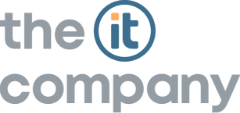Can You Afford $697,000 Due to Technology Interruptions?
Time is money. Every minute wasted is a potential loss in revenue, especially for industries like law, accounting, architecture, and engineering, where billable hours are the lifeblood of the business. With such high stakes, maximizing productivity and efficiency becomes paramount, and this is where the role of technology is critical. When done right and efficiently, IT can save you more than just time.
You can't buy more time in the day, but you can make every minute count.
If we consider a mid-sized firm with around 40 employees, interruptions throughout the workday are inevitable. Research suggests that the average interruption costs approximately 23 minutes of productive time. Now, let's do the math:
If each of the 40 employees faces just one interruption per day, the collective loss of productivity amounts to a staggering 15 hours per day. That's right, 15 hours of potential billable time lost every single day. Now, if we conservatively estimate the billable rate at $200 per hour, the daily loss would equate to approximately $3000. And when we extend this calculation over a year, the figures become even more alarming.
That's a potential loss of $697,000 in billable hours annually – all due to interruptions.
By implementing efficient systems and processes, IT can drastically reduce interruptions and streamline workflows, allowing professionals to focus on their core tasks without constant distractions. Here's some ways IT solutions can make a difference:
-
Communication Tools: Implementing robust communication tools like Slack, Microsoft Teams, or even a well-organized email system can help minimize unnecessary interruptions. Employees can communicate effectively without resorting to disruptive methods, such as in-person interruptions or lengthy phone calls.
-
Task Management Software: Utilizing task management software such as Trello, Asana, or Jira can help employees organize their workloads and prioritize tasks efficiently. With clear visibility into deadlines and responsibilities, employees can stay on track without being sidetracked by ad-hoc requests or unnecessary meetings.
-
Automation: Automating repetitive tasks not only saves time but also reduces the likelihood of human error. Whether it's automating document generation, data entry, or invoice processing, IT solutions can significantly increase productivity by freeing up employees to focus on more complex and value-added tasks.
-
Remote Access and Collaboration: With the rise of remote work, providing employees with seamless access to necessary resources and collaboration tools is more critical than ever. Cloud-based solutions and virtual private networks (VPNs) enable employees to work from anywhere without sacrificing productivity or security.
-
Cybersecurity Measures: IT security is not just about protecting data; it's also about safeguarding productivity. A robust cybersecurity infrastructure prevents downtime and disruptions caused by cyber threats, ensuring uninterrupted workflow continuity.
What should you be asking yourself about the efficiency of your technology?
- What are you doing to be more productive?
- How are IT problems causing you productivity loss?
- How is technology making your more productive, or is it hurting you?
- What ways are you leveraging tools, automation, AI to improve productivity?
- Are you questioning your IT team or Managed IT partner on what they are doing to help you reduce tech issues?
- Are you spending money on IT or investing wisely in technology?
- Are you and your IT team or partner proactively evaluating all aspects of IT and technology to gain maximum value?
- Do you have a plan, or do you plan to fail?
- Are you to have you outgrown your IT team or partner?
- Is your scale and maturity beyond the talent on your IT team or partners team?
- Are you cheaping out IT and costing yourself money?
Willingness to invest in IT efficiency isn't just about technology; it's about maximizing the value of your most precious resource – time. By optimizing your IT, you're not only minimizing interruptions but also unlocking the full potential of your workforce. So, the next time you're tempted to overlook IT improvements, remember the $697,000 you could be saving – and earning – each year.


